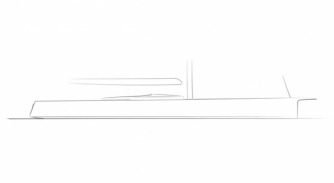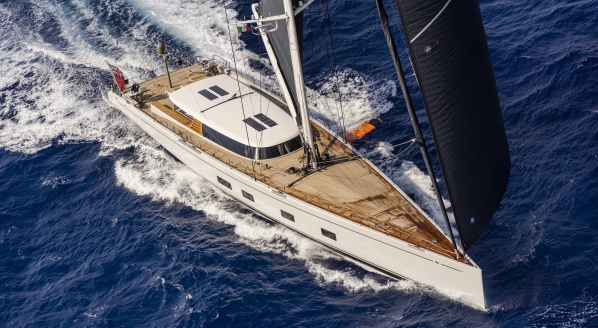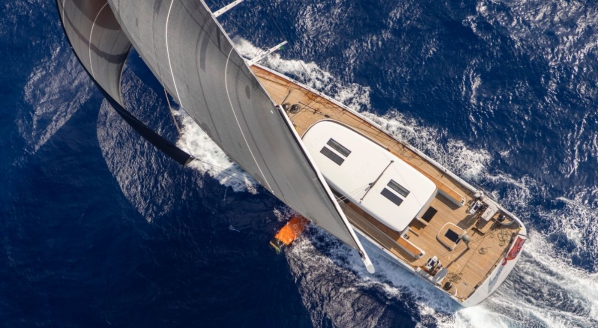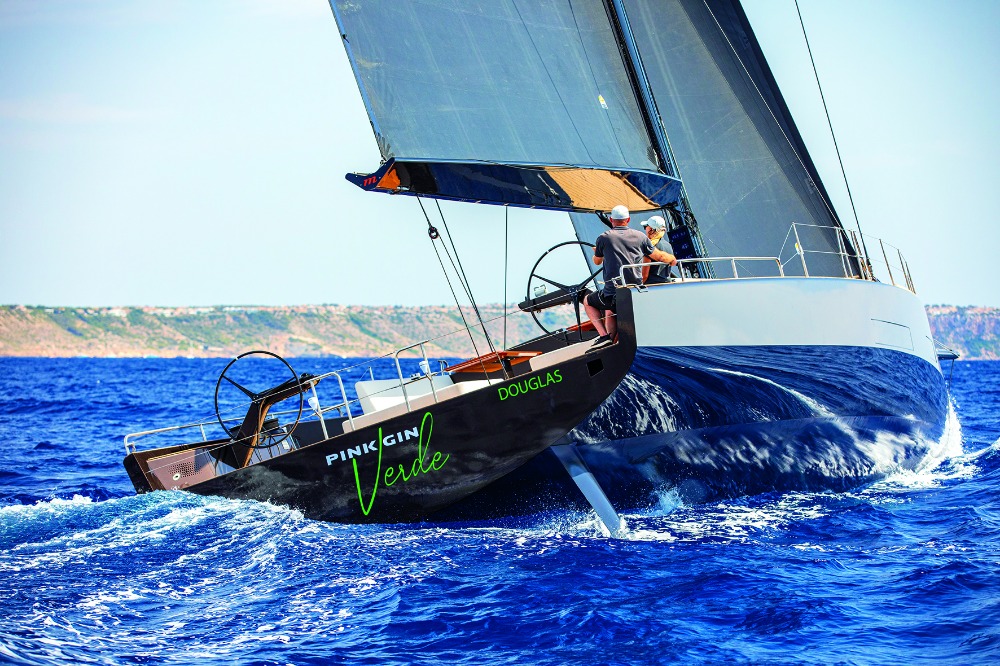Baltic Yachts’ innovation creates the most sustainable sailing vessels
It all starts with the fundamentals...the little things that bring down consumption, reducing the amount of power and number of batteries required…
The proliferation of hybrid-electric propulsion in the superyacht sector is evolving at a pace. The sailing superyacht sector has led the way with innovative designs for a generation. However, as Henry Hawkins, executive vice president at Baltic Yachts, outlines, truly innovative yacht designs need to stay grounded. And, try as the industry might, “You can’t change physics; the energy has to come from somewhere.”
The pragmatic approach that Baltic Yachts has pioneered addresses the reality of each problem and solves each on its merits. The answer is not always glamorous and sometimes not what a conventional yard would suggest. Having a battery bank and electrical propulsion is great, but where does the power come from? And, crucially, how can the vessel be more efficient with its energy generation and usage? The Baltic Yachts philosophy, as with its overall approach to the sustainability of its construction and operations, is to make the necessary incremental changes.
It all starts with the fundamentals. “The hull shape is going to be drawn by the naval architect, which in our case will always be based around the sailing performance of the boat,” says Hawkins. From there, the team gets to work to make the yacht as energy-efficient and, by extension, as low emission and sustainable as possible.
“What runs all the time?” asks Hawkins. “Take the air conditioning/ventilation and the fridge freezers; this is what we must not take our eyes off when talking about low- to zero-emission vessels. At Baltic Yachts, we are always looking to make these systems as efficient as possible, for example taking the heat generated from the air conditioning compressors and reusing the heat to the fan coils or to dry the air. These are the small things that will be beneficial in reducing the energy needs of the yacht in the long run.”
Further expanding on the Baltic Yachts approach, Hawkins highlights another on-board innovation: “On our latest launch, the seawater cooling is run by a centralised system with one pump rather than by many individual pumps running 24/7, without a reason. So it’s all those little things that then bring down the overall consumption, reducing the amount of power and therefore the number of batteries required to sustain the yacht.” This central pump is temperature- controlled and runs on demand only.
While at sea, power generation is an exciting development for the sailing-yacht sector. Hawkins and Kim Kolam, senior electrical engineer at Baltic Yachts, feel that the industry needs to stay grounded with apparent benefits. Most sailing yachts, even the most highly used, are at sea for only a fraction of the time they are on the water. Their capacity for power generation is therefore limited. Kolam explains that designing a shaft and propeller system that suits power generation can sacrifice its general efficiency and offset any potential net energy consumption savings. A more practical solution may be an entirely separate system for charging, leaving the propulsion system perfectly balanced for purpose.
Hawkins and the team at Baltic Yachts have had almost 50 years of experience honing their designs, and see a pivotal area as holding the key to keeping the momentum for a decarbonised yachting future: “If you don’t get client buy-in, it won’t change. It’s not something that we can invest in as a company over and over again without having the clients coming with us.”
By addressing each of the individual energy-efficiency considerations by developing in-house and partner technological innovations, Baltic Yachts is creating the most streamlined and operationally sustainable sailing yachts on the market. As battery technology and electric drive trains evolve, Baltic Yachts will have the most efficient sailing yachts to ingenerate each in a custom project – matched to a discerning next generation of superyacht owners.
Main image caption: Baltic 68 Café Racer – with zero emissions from its two 15kW electric engines, hydrogeneration while sailing, solar panels and 30 per cent reduction in power consumption from AC.
Profile links
NEW: Sign up for SuperyachtNewsweek!
Get the latest weekly news, in-depth reports, intelligence, and strategic insights, delivered directly from The Superyacht Group's editors and market analysts.
Stay at the forefront of the superyacht industry with SuperyachtNewsweek
Click here to become part of The Superyacht Group community, and join us in our mission to make this industry accessible to all, and prosperous for the long-term. We are offering access to the superyacht industry’s most comprehensive and longstanding archive of business-critical information, as well as a comprehensive, real-time superyacht fleet database, for just £10 per month, because we are One Industry with One Mission. Sign up here.
Related news

Baltic Yachts announces sale of Baltic 110
Due for delivery in 2023, the project comes at a busy time for the builder
Fleet

Baltic Yachts announces sale of Baltic 111 Custom
The new yacht is an extremely weight-sensitive project
Fleet

Foil-assisted cruising by Baltic Yachts
The innovative Dynamic Stability System offers major benefits for the large cruising yacht sector
Technology

Baltic 142 Canova: pushing the boundaries of sailing
An update on how the largest sailing yacht to feature foil technology is performing
Fleet
Related news
Baltic Yachts announces sale of Baltic 110
4 years ago
Foil-assisted cruising by Baltic Yachts
5 years ago
NEW: Sign up for
SuperyachtNewsweek!
Get the latest weekly news, in-depth reports, intelligence, and strategic insights, delivered directly from The Superyacht Group's editors and market analysts.
Stay at the forefront of the superyacht industry with SuperyachtNewsweek




